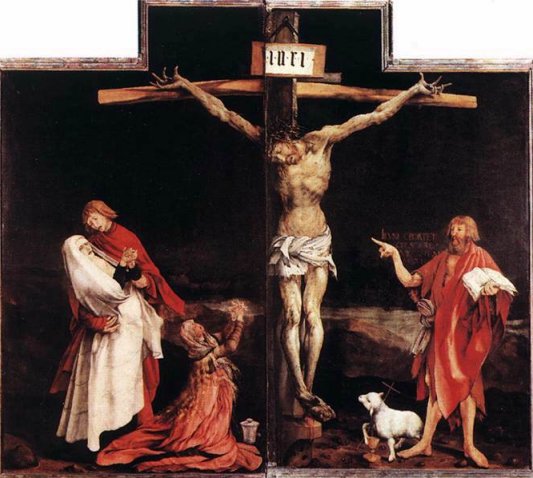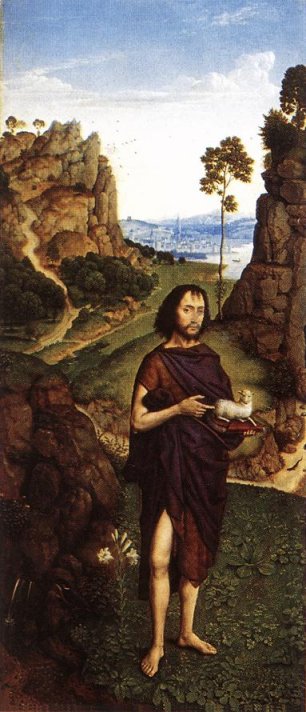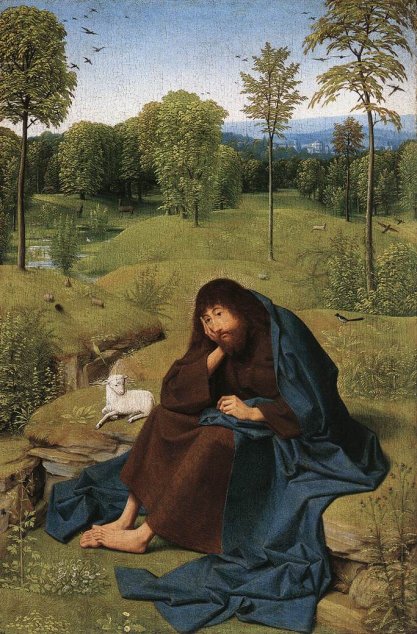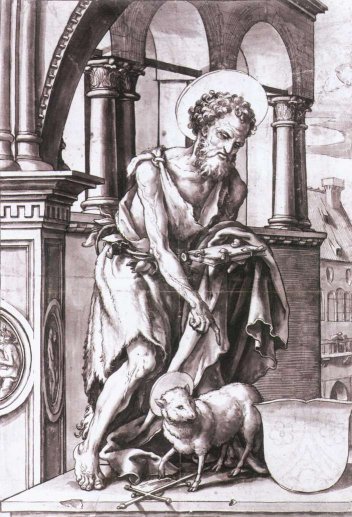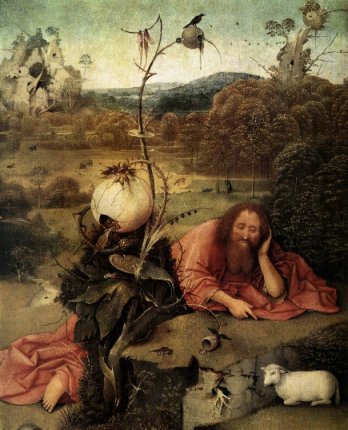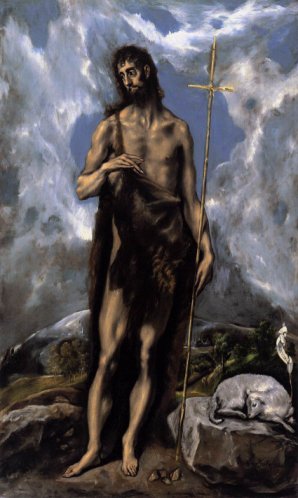|
John the Baptist |
|
After the Ghent altarpiece, a literal as opposed to a symbolic image of the Lamb of God usually appeared only as an attribute of John the Baptist. These images are found most frequently in northern art. One of the few altarpieces that can be compared in ambition to the van Eyck is the Isenheim Altarpiece by Matthias Grunwald, dating from 1515, 83 years later than the Ghent Altarpiece. I'm not intending to produce a detailed analysis of it here. As with the Ghent Altarpiece, scholars have devoted lifetimes to it and still haven't solved all its mysteries. Here, though, is the outside scene, showing the suffering Christ with John the Baptist on the right. This is a mystical, devotional image rather than a narrative one; John the Baptist was of course dead before the crucifixion took place. The portrayal of the lamb is reminiscent of that in the Ghent Altarpiece. |
|
|
|
|
|
Unterlinden Museum, Colmar |
|
| Further John the Baptist pictures from northern art again show what can be described as 'mystical' images of the Lamb of God: sitting on a sealed book, giving off rays of light, haloed, and so on. Bosch's picture shows a straightforward lamb, but the rest of the picture, with the usual wonderful Bosch surrealism, more than makes up for it. |
|
|
|
|
|
|
|
| As time passed, the mystical elements disappeared, and the Lamb of God became - well, a lamb. Here's El Greco's extraordinary version of John the Baptist. I'm almost inclined to say 'vision'. | |
|
|
|
